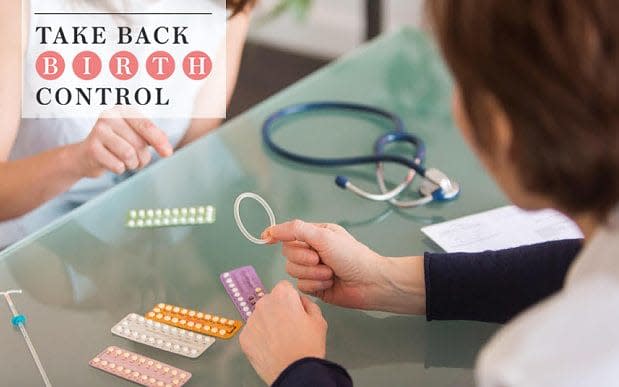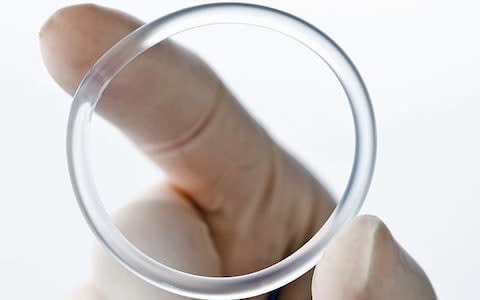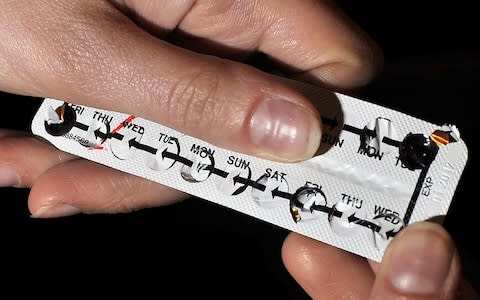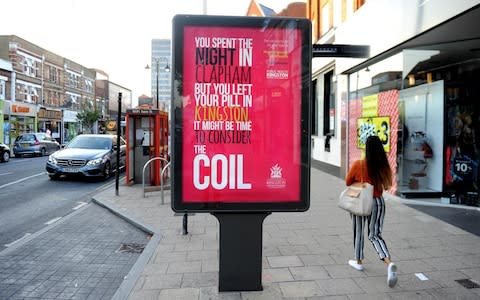16 types of birth control you need to know about - plus their pros and cons

When it comes to birth control many women tend to stick to the Pill or condoms. But there are actually 16 options available right now - and what better time to acquaint yourself with them than on World Contraception Day.
Here's the lowdown...
When it comes to contraception, many women just think of condoms and the Pill. A Telegraph Women and British Pregnancy Advisory Service (BPAS) study shows 63 per cent of more than 1,000 British women primarily use these types of birth control. It means that the other 13 forms of contraception – yes, there are now a total of 16 – don’t really get a look in.
But while condoms and the Pill may work well for a number of women - and a new study even suggests that the combined pill could prevent certain kinds of cancer - they don’t suit everybody. Hormonal contraception in particularly can affect all women in different ways. It’s why it’s so important that women know about all the options available to them, and just how they work - even more so now that a new type of contraception has just been given approval
The Natural Cycles app has just been granted medical approval, from certification body Tuv Sud, to be used as a contraceptive in the European Union, including the UK. It is the first time that such technology has been classified as being effective in preventing pregnancy and a breakthrough that could spell the end for hormonal and intrusive birth control measures.
Here is a brief guide to the 16 types of contraception now approved in the UK.
1) Male condom

What is it?
Made out of thin latex, the male condom put over the penis and stops sperm from entering the vagina. It’s 98 per cent effective if used exactly according to the instructions – but in reality is 82 per cent effective for the average woman.
Pros
- Condoms are the best way to protect yourself and your partner against sexually transmitted infections (STIs)
- When used correctly, they're a reliable way of preventing pregnancy
- You only need to use them when you have sex – they do not need advance preparation
- In most cases, there are no medical side-effects.
Cons
- Condoms may slip off or break if the wrong size is used
- Some people may be allergic to latex, plastic or spermicides
- The man has to pull out immediately after ejaculating before the penis goes soft.
2) Female condom
What is it?
The female condom is made of thin polyurethane that loosely lines the vagina and stops sperm from entering. It's 95 per cent effective if used according to instruction - but 79 per cent effective for the average woman.
Pros
- It can protect both partners from STIs
- When used correctly, they're a reliable way of preventing pregnancy
- You only need to use them when you have sex – they do not need advance preparation
- In most cases, there are no medical side-effects.
Cons
- It is not as widely available as male condoms and may get pushed into the vagina
- They may split off or tear if not used properly.
3) Contraceptive injection
What is it?
The contraceptive injection a long-acting reversible contraception that does not depend on you taking it daily and is more than 99 per cent effective.
It works by a doctor or nurse injecting progestogen injected into the body and lasts for eight to 13 weeks depending on the type used.
Pros
- It can be used it you are breastfeeding (though no contraception is required in the first 21 days after birth)
- It does not interrupt sex
- You don't have to remember to take a pill every day
- It could reduce painful periods
- It offers some protection from pelvic inflammatory disease (the mucus from the cervix may stop bacteria entering the womb) and may also give some protection against cancer of the womb.
Cons
- It cannot be removed from the body once it has been injected so side effects, such as irregular periods or weight gain, may continue for as long as it works and some time afterwards
- It can cause some women to gain weight
- Periods and fertility may take time to return after stopping it.
4) Contraceptive implant
What is it?
The contraceptive implant is a small flexible rod that is place under the skin of the upper arm by a health professional and releases progestogen to stop ovulation.
It is a long-acting reversible contraception that does not depend on you taking it daily and is over 99 per cent effective.
Pros
- The implant lasts for three years but can be taken out sooner
- You don't have to think about your contraception once it has been inserted
- When the implant is removed your fertility will return to normal.
Cons
- You can feel it with your fingers in your arm, though it can't be seen, and it is put in using a local anaesthetic
- It may increase chances of getting acne.
5) Intrauterine device (IUD)
What is it?
The intrauterine device is a small plastic and copper device known as a ‘coil’ that is put into the uterus by a doctor or nurse. It is a long-acting reversible contraception that does not depend on you taking it daily and is over 99 per cent effective.
It works immediately and can stay in from five to 10 years, though it can be removed at any time by a health professional.
Pros
- It does not contain any hormones
- You don't have to think about your contraception once it has been inserted
- When it is removed, your fertility will return to normal.
Cons
- It could make periods heavier
- Some women do not like having it inserted
- There is a small chance of getting an infection in the first 20 days after insertion.
6) Intrauterine system (IUS)

What is it?
The intrauterine system is a small plastic device that’s inserted into the uterus by a health professional and slowly releases the hormone progestogen into the womb. It is a long-acting reversible contraception that does not depend on you taking it daily and is over 99 per cent effective.
Pros
- It works for five years though it can be taken out sooner
- It can make periods lighter and shorter
- The hormones are localised, and only small amounts enter your body.
Cons
- It can cause irregular bleeding or spotting for the first six months
- Some women do not like having it inserted
- There is a small chance of getting an infection in the first 20 days after insertion.
7) Contraceptive patch
What is it?
The contraceptive patch is a small patch you stick on to the skin that releases estrogen and progestogen. It stops ovulation and is over 99 per cent effective if used according to instructions - but 91 per cent effective for the average woman.
Pros
- You don’t have to think about it every day
- It can make periods lighter and more regular
- It can improve acne for some women.
Cons
- It is not suitable for very overweight women or smokers over 35-years-old
- It has a low risk of serious side-effects such as blood clots, breast and cervical cancer.
- It can cause temporary side-effects such as headaches, nausea, mood changes and breast tenderness.
8) Contraceptive vaginal ring

What is it?
The contraceptive vaginal ring is a small plastic ring a woman inserts into her vagina every month and releases hormones to stop ovulation. It is over 99 per cent effective if used according to instructions - but 91 per cent effective for the average woman. It is used for three weeks out of four.
Pros
- You don’t have to think about it every day
- It can make periods lighter and more regular.
Cons
- It is not suitable for very overweight women or smokers over 35-years-old
- You must be comfortable inserting and removing it yourself
- It has a low risk of serious side-effects such as blood clots, breast and cervical cancer.
- It can cause temporary side-effects such as headaches, nausea, mood changes and breast tenderness.
9) Combined pill

What is it?
The combined Pill is a daily oral contraceptive that contains estrogen and progestogen and is over 99 per cent effective if used according to instructions - but 91 per cent effective for the average woman. It must be taken daily.
Pros
- It's easy to take and stop taking
- It can make periods lighter and more regular.
Cons
- It is not suitable for very overweight women or smokers over 35-years-old
- Forgetting to take pills, vomiting or severe diarrhoea can make it less effective
- It has a low risk of serious side-effects such as blood clots, breast and cervical cancer
- It can cause temporary side-effects such as headaches, nausea, mood changes and breast tenderness.
10) Progestogen-only pill

What is it?
The progestogen-only Pill is a daily oral contraceptive that contains the hormone progestogen and is over 99 per cent effective if used according to instructions - but 91 per cent effective for the average woman.
It may stop periods or make them lighter but can cause temporary side-effects.
Pros
- It can make periods lighter and more regular, or stop them altogether
- It can be used by women who smoke and are over 35-years-old.
Cons:
- It must be taken daily at the same time and is not effective if taken over three to 12 hours late
- Missing pills, vomiting or severe diarrhoea can make it less effective.
- It can cause temporary side-effects such as headaches, nausea, mood changes and breast tenderness.
11) Diaphragm

What is it?
The diaphragm is a soft dome made of latex or silicone and is used with spermicide. It is put into the vagina to cover the cervix and is 92 to 96 per cent effective when used correctly – but 88 per cent effective for the average woman.
It must be taken daily at the same time and is not effective if taken over three to 12 hours late.
Pros
- It can be put it any time before sex and removed six hours afterwards
- You only use it during sex
- It has no serious health risks.
Cons
- You need to use spermicide with it
- It can take time to learn how to use it correctly
- You may need to change sizes after having a baby, miscarriage or abortion.
12) Cap
What is it?
The contraceptive cap (bottom left) is similar to the diaphragm, though it is generally always made of silicone. It is put into the vagina to cover the cervix and is 92 to 96 per cent effective when used correctly – but 88 per cent effective for the average woman.
It is reusable, comes in different sizes and you must be fitted by a trained doctor or nurse.
Pros
- It can be put it any time before sex and removed six hours afterwards
- You only use it during sex
- It has no serious health risks.
Cons
- You need to use spermicide with it
- It can take time to learn how to use it correctly
- You may need to change sizes after having a baby, miscarriage or abortion.
13) Natural family planning

What is it?
Natural family planning, also known as fertility awareness, relies on you knowing the fertile and infertile times of your menstrual cycle, by noting different indicators to show when you can have sex without the risk of pregnancy.
It is up to 99 per cent effective when used correctly but 72 per cent effective for the average woman. It takes three to six menstrual cycles to learn it, and the NHS recommends speaking to a trained fertility awareness professional. Some NFP methods are now available on mobile apps.
Pros
- This method is hormone free and requires no device or Pill
- It can give you greater awareness over your body
- It can be used to plan a pregnancy, as well as prevent.
Cons
- It can take time to learn how to use it correctly and accuracy is important
- You need to keep daily records.
14) Female sterilisation (tubal occlusion)

What is it?
Female sterilisation is a permanent method for women who are sure they will never want children. It works by cutting or sealing the fallopian tubes in an operation.
Pros
- Periods will not be affected
- You'll never have to think about contraception again.
Cons
- It cannot be easily reversed
- You may experience some discomfort after the operation
- You need to be completely certain - it is important to have counselling beforehand.
15) Male sterilisation (vasectomy)

What is it?
Male sterilisation is a permanent method for men who are sure they will never want children. The tubes that carry sperm from the testicles to the man’s penis are cut, sealed or tied.
Pros
- You'll never have to think about contraception again
- It's usually performed under general anaesthetic.
Cons
- It cannot be easily reversed
- You may experience some discomfort after the operation
- You need to be completely certain - it is important to have counselling beforehand.
16) Natural Cycles app
What is it?
It's an app which helps you understand how your cycle works. You can only get pregnant during six days in your cycle. This app finds those days for you. All you need to do is measure your temperature in the morning, enter it into the app and it will give you a red or a green day depending on whether you need to use protection.
Pros
- If used properly, you can have sex without protection on certain days in your cycle.
- It means you could avoid all the forms of contraception which can have side effects.
Cons
- It doesn't protect against STDs.
- It can take up to a few months for the algorithm to get to know your unique cycle.
There are many individual factors that can affect which contraception is best for you. To find out more visit the NHS website, or talk to a health professional.

